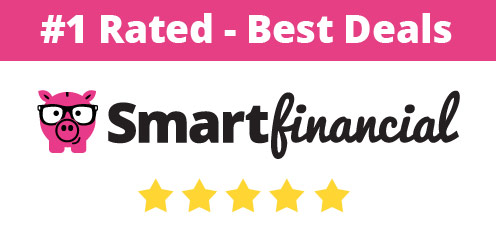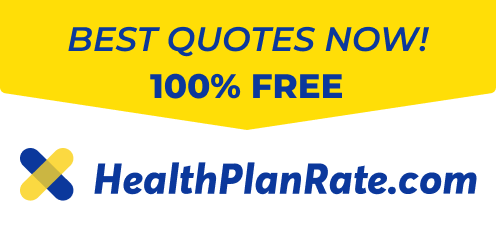Self-employed people, sole proprietors and those who work for small businesses can band together and create an association health plan to help them get better health insurance rates.
The federal government also loosened regulations involving AHP’s geographic locations and the Affordable Care Act’s AHP requirements. The result is that AHPs are once again a lower-cost option for Americans and now have added consumer protections.
Let’s take a look at AHPs, how they compare with other health plans, and how to sign up:
- What’s an association health plan?
- New AHPs offer more protections
- Possible issues with AHPs
- Health insurance alternatives
- Which health plan is best for you?
- How to sign up for an association health plan
What’s an association health plan?
AHPs allow small businesses and self-employed people to band together to buy health insurance. In theory, this gives small businesses more leverage when contracting with health insurers.
Large companies have more negotiating power when it comes to health insurance. Smaller businesses usually pay higher health insurance costs. AHPs look to even the playing field.
AHPs are lower-cost and can come with fewer consumer protections. AHPs were once a more popular alternative. They fell out of favor after the ACA required AHPs offer the same protections as individual health plans.
The additional regulations led to many AHPs disbanding. Kaiser Family Foundation said only 6% of employers with fewer than 250 employees offered coverage through an AHP in 2018. That percentage is expected to grow as more small businesses look for ways to reduce health costs.
Sole proprietors can also come together with other self-employed people or small businesses to get insurance. The law requires members of an AHP share a similar professional or the same general business region. They don’t have to live in the same state.
Though not as regulated as the individual market, the new AHP regulation does provide some protections, said Kev Coleman, president of AssociationHealthPlans.com.
“Some of the key consumer protections related to these new large group association health plans are pre-existing condition coverage, preventive care coverage, maternity and newborn care coverage, COBRA benefits and prohibitions on annual/lifetime spending caps for health benefits,” Coleman said.
The federal regulation also forbids AHPs from charging higher premiums or denying coverage to people with pre-existing conditions. Coleman said other regulations also apply to AHPs, such as the Mental Health Parity and Addiction Equity Act and the Women’s Health and Cancer Rights Act.
Plus, states can demand AHPs offer additional coverage. States differ in regulations associated with AHPs.
Angela Sluss, COO of Wellthie, said, “Some states are embracing AHPs as they are operating under the belief that the plans will enable their small business owners to provide their employees with affordable health care options. However, there are certainly other states concerned that the affordability of AHPs, when compared to alternative insurance options, will cause more healthy individuals to join those plans, leaving less healthy individuals paying a higher premium,” said Sluss.
New AHPs offer more protections
Despite fears that AHPs would result in fewer consumer protections, a report by AssociationHealthPlans.com found that the new plans provide comprehensive benefits and double-digit cost savings.
Coleman said the new AHPs are offering similar coverage to regular health insurance plans. Many are providing coverage for doctor visits, hospitalization, emergency care, prescription drugs, maternity, preventive and mental health care.
Most of the AHPs were set up by regional associations, such as chambers of commerce. Coleman found that AHPs usually offer multiple plan options.
Coleman added that nearly half of the new AHPs are available to sole proprietors and self-employed people. About half are limited to businesses with between two and 50 employees.
Nearly half also offer medical savings accounts, such as Health Savings Accounts (HSAs). HSAs allow people to save money tax-free for health expenses.
Major insurers are involved in AHPs, such as UnitedHealthcare and Blue Cross Blue Shield plans. That list could grow depending on how many people sign up for AHPs.
One example of an AHP is provided by Land O’Lakes. The Land O’ Lakes Cooperative Farmer Health Plan provides ACA-compliant plans with an extensive network of doctors and hospitals. The AHP is available in Minnesota and Nebraska to farmers in participating co-ops and individual dairy farmers in those states.
Possible issues with AHPs
Previous AHPs were prone to fraud and “junk plans.” So-called junk health plans, which were more common before the ACA, don’t offer enough protection for people. They also can lead to hefty out-of-pocket costs.
However, Coleman said current AHP regulation offers anti-fraud protections. For instance, insurers, brokers, and health care provider networks can’t control an AHP. That’s considered a conflict of interest now.
“Instead, an association health plan is required to be controlled by the companies belonging to the association and these companies must also have employer participation in the plan. Thus, the regulation seeks to leverage the employer’s’ own self-interest to discourage abuse,” Coleman said.
Coleman said fully-insured AHPs have a low risk of fraud. A third-party insurer runs the day-to-day operation of a fully-insured AHP.
Self-insured plans, on the other hand, are a higher fraud risk, but they’re subject to the new regulation’s anti-fraud provisions.
Nevertheless, AHP critics worry the newly-reinvigorated plans may cause a mass exodus from ACA plans. The American Academy of Actuaries predicted between 3 and 10% of Americans in the individual market would drop coverage and move to AHPs. Avalere predicted AHPs will move 3.2 million enrollees from the individual and small-group markets to AHPs by 2022. The Congressional Budget Office estimated that 4 million Americans will join an AHP by 2023.
Health insurance alternatives
An AHP is one avenue for small business owners and sole proprietors. There are other health insurance options, too.
You should weigh the pros and cons of each before deciding on a plan. Here are some other options for you:
Spouse’s employer-sponsored plan
You can check to see if you can get added to your spouse’s employer-sponsored plan. This option would likely offer you more protection and fewer out-of-pocket costs than an AHP.
That said, employer-sponsored health insurance usually costs more than short-term plans and AHPs. You’ll have to decide whether the potentially added protections are worth the added costs in an employer-sponsored plan.
Employees paid an average of $5,588 annually on premiums for family coverage in 2020, according to Kaiser Family Foundation.
Individual market/ACA plan
Individual insurance is an option, but it can come with a higher price tag than other coverage depending on your income.
If you’re at 400% of the federal poverty level or lower, the federal government provides tax cuts and subsidies to help pay for health insurance for those with an ACA plan. That can help cut down the costs of your premiums.
Check out the Health Insurance Advisor to help you find an individual plan.
Short-term health plan
The Trump administration expanded short-term health plans in 2019. Now, anyone can get a short-term plan. Previously, those eligible were only young adults and those who couldn’t afford any other type of coverage.
However, the new regulation lets anyone sign up for a short-term plan. Plus, people can have short-term health plans for a year and renew two more times. So, in essence, you can have a short-term health plan for up to three years.
Short-term health plans are low-cost, but they may not offer the same protections as a regular health insurance plan. For instance, you may pay much higher out-of-pocket costs with a short-term plan or not have some services covered.
Nevertheless, a short-term health plan could be an option for you if you’re young and healthy and only want a health insurance safety net.
COBRA
COBRA is an option if you lost your job within the past 18 months. You must sign up for coverage within 60 days of job loss.
The benefit of COBRA is that you get to keep your employer-sponsored insurance. The downside is that the employer no longer chips in to help pay for coverage. Instead, you may spend as much as 102% of the plan’s costs.
That can lead to hefty costs when you consider that the average annual family premiums were nearly $20,000 in 2020. Employees paid about $5,588 of that amount on average. The employer paid the rest.
In a COBRA plan, the former employee would have to pay the full amount.
Medicaid
Medicaid, which covers 70 million Americans, is based on your income.
Your state decides on income eligibility. Medicaid expansion allows states to expand eligibility up to 138% of the federal poverty level. Thirty-eight states have expanded Medicaid and others are exploring the possibility.
Medicaid’s provider networks aren’t as large as Medicare or employer-sponsored health insurance. So, you may have a little more trouble finding a doctor who takes Medicaid. That said, Medicaid is a low-cost option for lower-income Americans with small out-of-pocket costs and plenty of consumer protections.
Which health plan is best for you?
Here’s a round-up of different health insurance options and who might be interested in each one:
- Association health plan — You’re self-employed or a small business owner who belongs to an organization that offers an AHP.
- Employer-sponsored health insurance — Your spouse has health insurance through his/her company and you’re looking for a health insurance plan that offers full protection and you’re not as concerned about costs.
- Individual market/ACA plan — You want more coverage than what an AHP offers and don’t mind higher premiums. This could also be an option if your household income is less than 400% of the federal povery level, since you can benefit from tax breaks and subsidies.
- Short-term health plan — You want low costs and don’t expect to need much health care.
- COBRA — You lost your job within the past 60 days and you want to keep your employer-sponosred health plan. You also don’t mind paying for all of the health insurance costs.
- Medicaid — You qualify for coverage and want a low-cost option with full coverage.
Find out more about these different plans and compare your options.
How to sign up for an association health plan
How to enroll in an AHP depends on the association. You’ll want to check with your groups and associations to see who’s the approved insurance broker to sign up for an AHP.
If you’re a sole proprietor, you must meet the association’s eligibility requirements, such as belonging to a specific chamber of commerce or trade group that offers an AHP.
If you’re interested in an AHP, Coleman suggested:
- Review the plan’s Summary of Benefits, so you know exactly what the plan offers. Compare it to other coverage options.
- Make sure your doctors and hospitals are considered in-network. Out-of-network care leads to higher out-of-pocket costs. That can result in surprise medical bills.
- Don’t focus only on premium costs. Review deductibles and copayments. Put all of those costs together to figure out the plan’s total costs before deciding.
Sluss said it’s critical to educate yourself on the plans’ offerings and potential limitations.
“I encourage individuals to know how their state views Association Health Plans and to keep that in mind when making this important decision,” Sluss said.










